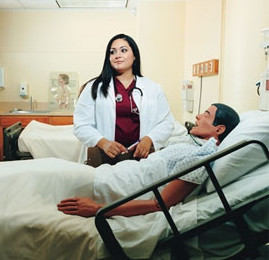There are so many external factors that influence workflow for a locum tenens nurse practitioner. In some clinics I am able to see 25-30 patients without feeling stressed. In other clinics, I can barely see 18-20 patients without feeling overwhelmed.
What factors influence work flow?
- Clinic policy for late arrivals. One clinic I worked with had a 15 minute rule. Meaning, if a patient is scheduled to be seen at 4:00 pm, they have until 4:15 pm to show up for their appointment before they are marked as a no show. No shows then have to reschedule their appointments. This inspired patients to be on time for their appointments.
In another clinic, patients were scheduled 15 minutes before their actual appointment. So if they were scheduled for the 1:30 pm appointment, they had to check in by 1:15 pm or they were considered late. Once they were late, the provider was asked if the patient needed to be rescheduled or if they should wait for a “no show” and be placed as a walk –in appointment (replacing the “no show” appointment). Patients typically learn their lesson the first time they are late, because they will either not be seen or will have to wait a couple of hours to take a “no show” spot.
- Desktop vs Laptop for charting. I think it is ideal for providers to have a laptop for charting, in which they can bring with them to the patient’s room. On the other hand, a lot of clinics have their providers use desktop computers. There is a desktop computer in the provider’s office, and a different one in the patient’s room.
When using a laptop, you can easily start documenting before, during, and after seeing the patient (while staying logged in). You can quickly put in orders with the patient or while stepping out of the room. I find that having to log in and out of a computer upon each patient visit and upon each order can be tedious and time consuming when using desktop computers.
- Patient room locations. I have taken for granted having my own office and my patient rooms directly adjacent to it. In some clinics they have providers share a common work station/office. In this case, it is impossible to have provider rooms as close as possible to the office. Some days my patient rooms were easily a couple of hallways away from the office. This became time consuming, as I constantly had to walk back and forth between my office and the patient’s room. Some patients require care in which you need to step out of the room to look for something or call someone, thus you need to be in and out between their room and your office.
- Medical assistant level of autonomy. As I have mentioned previously, some clinics I have worked with have very independent MA’s. They gather past medical history; follow standard protocols to order and test for strep, flu, or UTIs; assess and order vaccinations per schedule; order screening exams as needed such as mammograms, colonoscopies, and diabetic retinal imaging exams; perform diabetic foot exams; have the patients undress for well woman exams or STD screenings; etc.
These little tasks can easily accumulate and become time consuming. By MA’s helping facilitate the process of gathering information and ordering recommended exams, it helps save us time and allows us to focus on other primary care needs.
I have worked in places before where the MA’s were not well trained. So when I went in to see a patient for a well woman exam, the patient was not undressed, nor were the pap smear materials ready for me to use. Once I had a patient that came in for wound care, but the previous dressing was not removed, nor were there wound care items easily accessible for me to use.
Unfortunately, those delays in the preparation of the patient cost me plenty of time. Anyone working in healthcare knows that time is precious, and any set back can push back the entire schedule.


